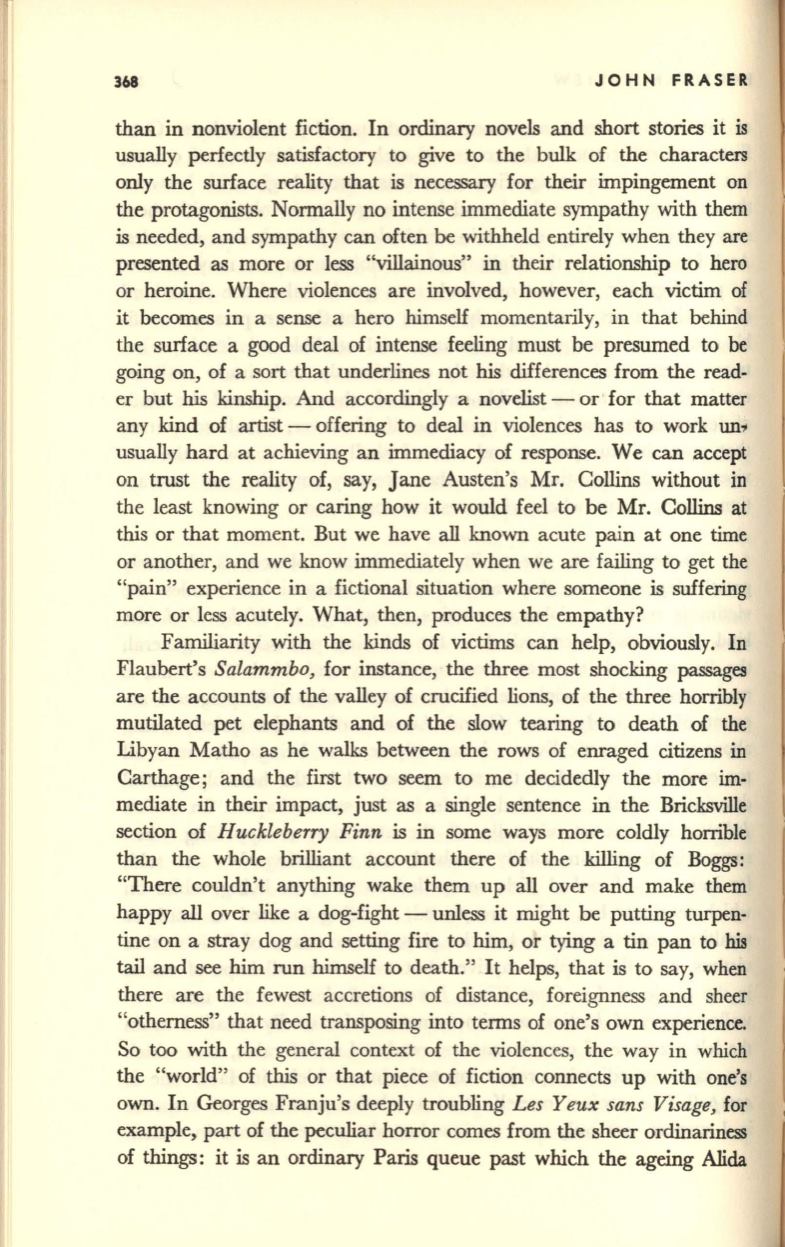
368
JOHN FRASER
than in nonviolent fiction. In ordinary novels and short stories it
is
usually perfectly satisfactory to give to the bulk of the characters
only the surface reality that is necessary for their impingement on
the protagonists. Normally no intense immediate sympathy with them
is needed, and sympathy can often be withheld entirely when they are
presented as more or less "villainous"
in
their relationship to hero
or heroine. Where violences are involved, however, each victim of
it becomes in a sense a hero himself momentarily, in that behind
the surface a good deal of intense feeling must be presumed to
be
going on, of a sort that underlines not his differences from the read–
er but his kinship. And accordingly a novelist - or for that matter
any kind of artist - offering to deal in violences has to work
un~
usually hard at achieving an immediacy of response. We can accept
on trust the reality of, say, Jane Austen's Mr. Collins without in
the least knowing or caring how
it
would feel to be Mr. Collins at
this or that moment. But we have all known acute pain at one time
or another, and we know immediately when we are failing to get the
"pain" experience in a fictional situation where someone is suffering
more or less acutely. What, then, produces the empathy?
Familiarity with the kinds of victims can help, obviously. In
Flaubert's
Salammbo,
for instance, the three most shocking passages
are the accounts of the valley of crucified lions, of the three horribly
mutilated pet elephants and of the slow tearing to death of the
Libyan Matho as he walks between the rows of enraged citizens
in
Carthage; and the first two seem to me decidedly the more
im–
mediate in their impact, just as a single sentence in the Bricksville
section of
Huckleberry Finn
is in some ways more coldly horrible
than the whole brilliant account there of the killing of Boggs:
"There couldn't anything wake them up all over and make them
happy
all
over like a dog-fight - unless it might be putting turpen–
tine on a stray dog and setting fire to him, or tying a tin pan to
his
tail and see him run himself to death."
It
helps, that is to say, when
there are the fewest accretions of distance, foreignness and sheer
"otherness" that need transposing into terms of one's own experience.
So too with the general context of the violences, the way in which
the "world" of this or that piece of fiction connects up with one's
own. In Georges Franju's deeply troubling
Les Yeux sans Visage,
for
example, part of the peculiar horror comes from the sheer ordinariness
of things: it is an ordinary Paris queue past which the ageing
Alida


